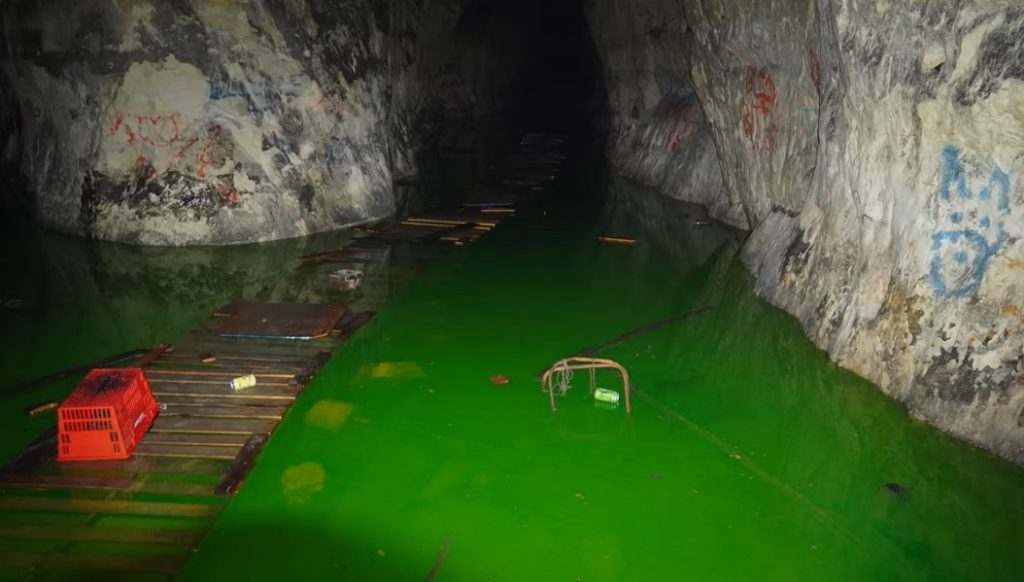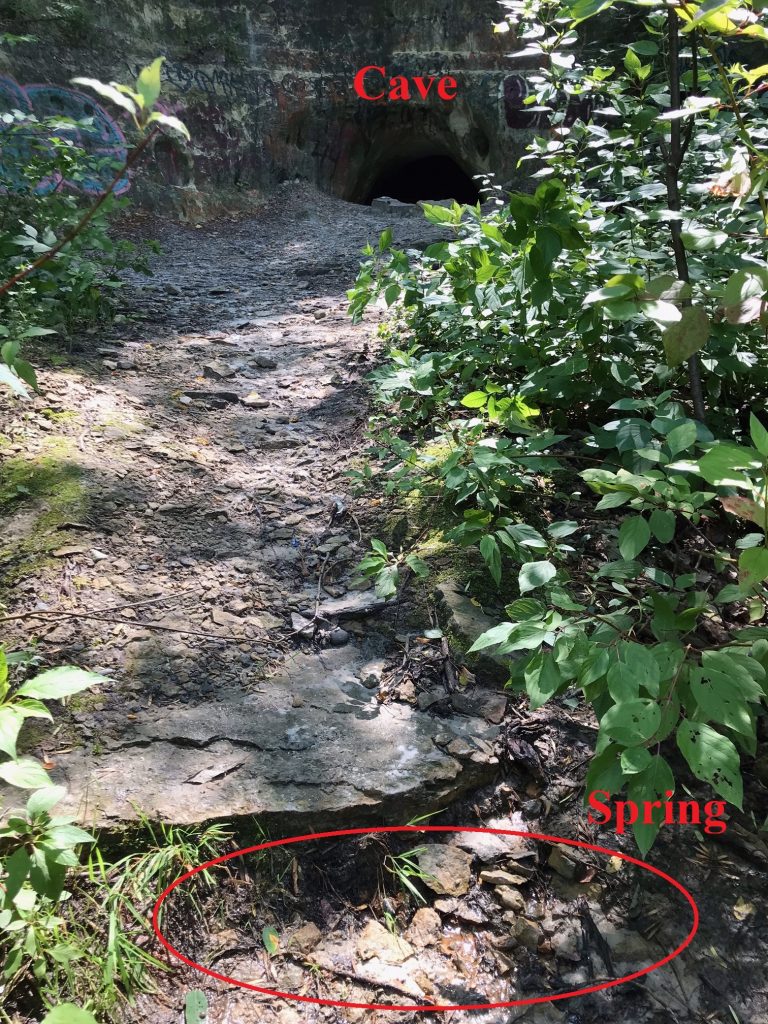In July 2021, the St. Paul Parks & Recreation Department contacted the Minnesota DNR about a citizen report of a possible “dye trace” in progress at the sandstone caves of the Bruce Vento Nature Sanctuary. Dyed water was seen flowing out of the North Star Brewery Cave. (The cave was dug out around a natural spring, to form a sort of “swamp cooler” for beer storage.) No known dye trace was being conducted there by the DNR, nor by others known to conduct such traces. It seemed to be an isolated incident at the time. But several years later, I came across another case, on a larger scale, at Echo Cave in the former St. Paul brickyards, and the pattern became evident.
From what I’ve been able to piece together, someone dumped Solaron Pond Dye in the finger lakes of Echo Cave on St. Patrick’s Day (March 17, 2024), giving them an intense green color that lasted throughout the summer months (see photo below). We call them finger lakes because they extend along the linear cave passages. Given the occasion, it would have had nothing to do with dye tracing, but rather some spelunkers celebrating the holiday, just like the dye used to turn the Chicago River green. A friend of mine who is active on Reddit said there was a thread where the perpetrator admitted to dumping the dye (which is how we know the brand name—usually employed for tracing swimming pool leaks).

Figure 1. Green-dyed water in Echo Cave, showing the bridge of pallets, St. Paul, MN.
On June 9, 2024, with others, I made a visit to Echo Cave. Abundant spring rains (and presumably infiltration) had swollen the finger lakes beyond their usual bounds. Party-goers had constructed a makeshift bridge of pallets to reach the dry passages beyond the lakes, where they had set up a laughing gas bar (yes, you heard that right). But this bridge had been disassembled by the rising waters and was not functional. I found that by wearing a pair of high-top boots, and sticking to the walls, I was able to traverse the lake without soaking my feet. We saw a frog swimming through the garishly green waters, suggesting, as the packaging says, that the dye is nontoxic.
The cave water was still green as of my subsequent, July 25 visit, at which time we did a “real” dye trace. There’s a spring outside Echo Cave, about 10 meters away, along the trail leading downhill from the entrance (see photo below). We collected water from this spring, and although it appeared clear in the bottle, by exposing it to UV light, the clear water glowed just like the green water inside the cave did when exposed to UV light. Since there are many substances that fluoresce under UV, including bodily fluids, it was not totally conclusive, but it’s what we had “funding” for.

Figure 2. Photograph of Echo Cave and nearby spring.
On November 2, I made another visit, only to find that the water level inside the cave had dropped about half a foot, and the spring outside the cave had ceased to flow. The cave water was no longer green, but a faint tinge of degraded dye could still be seen.
So, if you hear reports of “dye traces” in the future, check whether it’s somewhere near St. Pat’s Day. It could just be part of the festivities.
By Greg Brick
MGWA is committed to developing a just, equitable, and inclusive groundwater community. Click on the button below to read MGWA’s full diversity statement.